Responding to Global Needs: The history of NEG
NEG was founded over half a century ago, in 1949. In the intervening years, the company has consistently focused on developing and improving its glassmaking technology and introducing new products. NEG has always been committed to creating and refining its technology. In addition to the production facilities in Japan that constitute its core base, NEG has established plants overseas to meet global needs. The company has also been transforming its business structure in order to adapt to new market conditions. NEG will continue to draw on its extensive expertise and seek to manufacture products of the highest standards.
1944-1959 Creating NEG’s Foundations
In 1949, the company was separated from NEC and founded as NEG, with a focus on hand-blown vacuum bulbs and glass tubing. In 1951, NEG succeeded in automating the production of glass tubing by the Danner process. In 1956, continuous production of glass tubing began, using a tank furnace, and glass tubing became the foundation of the company.
Creating NEG’s Foundations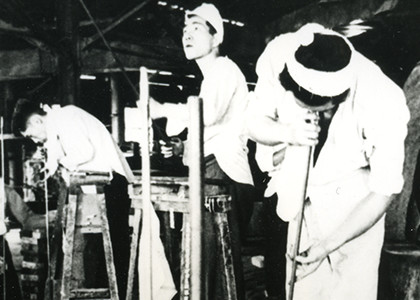
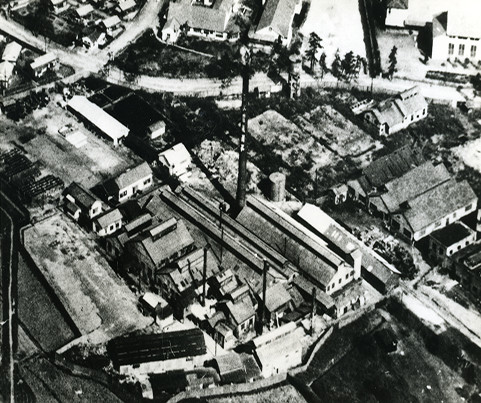
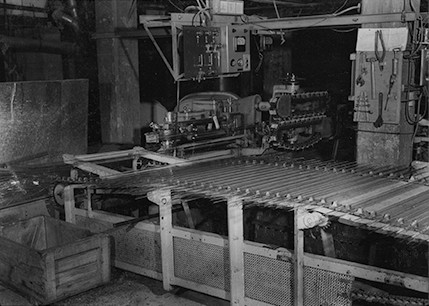
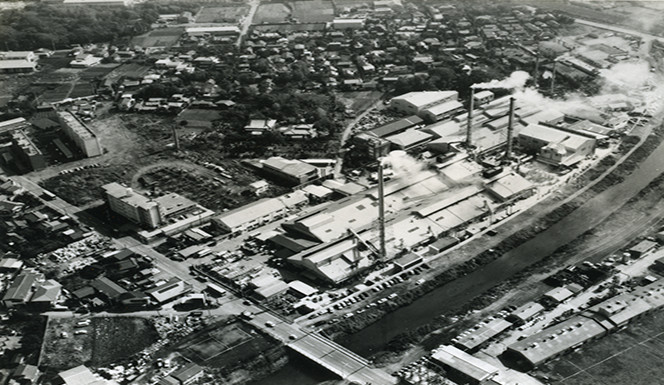
1960-1989 The Age of CRTs
Production of CRT glass bulbs was started in 1965. The company entered a period of growth that reflected the development of television and CRT-related business in Japan. This period saw the start of production of glass-ceramics, glass blocks for construction, electronic glass materials, and glass fiber. NEG grows into one of the world’s leading manufacturers of specialty glass, with CRT glass becoming one of its core products.
The Age of CRTs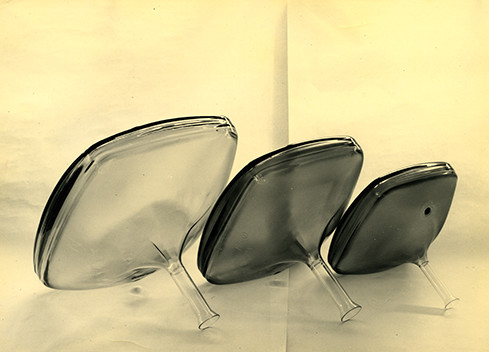
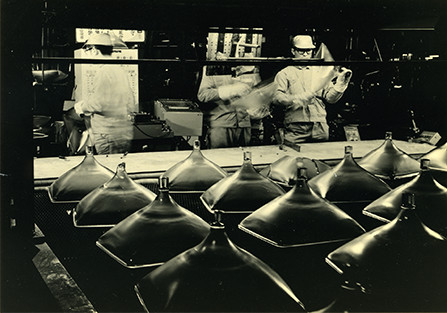
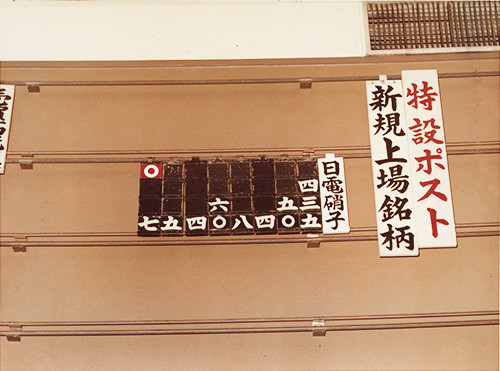
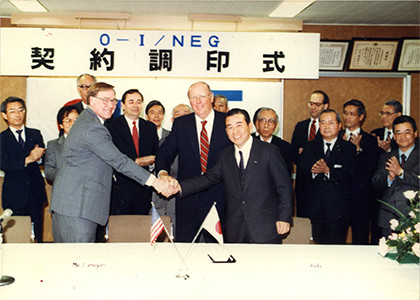
1990-1999 Age of Overseas Development
Entering the 1990s, NEG began to put together a global production network in response to the overseas expansion of Japanese CRT manufacturers and growing global demand. Flat panel displays began to appear in the latter half of 1990s, and the company started producing substrate glass for LCDs and PDPs by the overflow and float processes, respectively.
Age of Overseas Development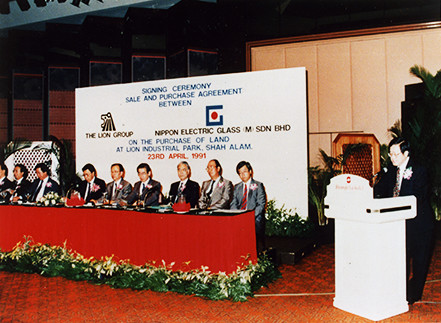
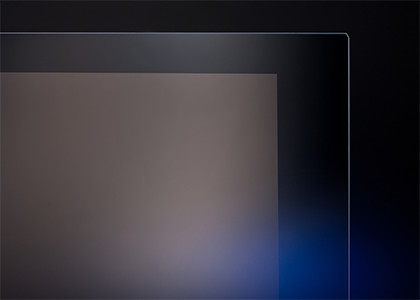
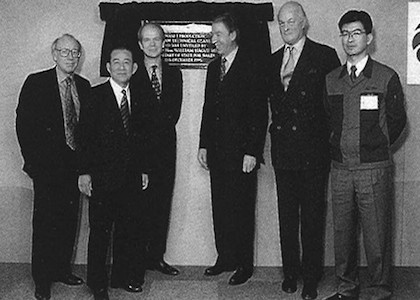
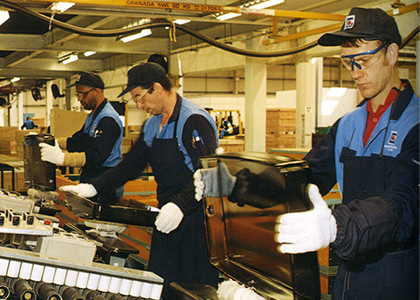
2000-2009 The Age of FPDs
To meet the rapid increase of the FPD market, we started producing glass substrates for LCDs using the overflow process. We made efforts to match the advanced requirements of the FPD market, such as making larger and higher-quality glass substrates.
The Age of FPDs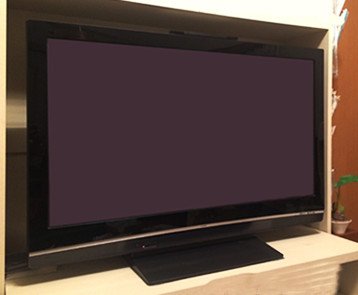
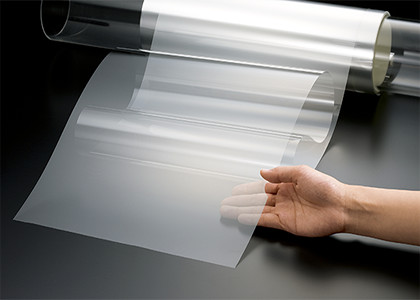
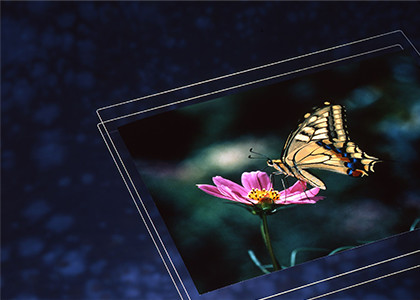
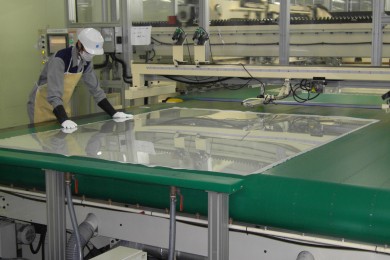
2010-2014 Creating a new business pillar for growth
With the deceleration of FPD glass sales, we expanded our glass fiber for reinforcing high-function engineering plastics, and glass tubing for pharmaceutical and medical use. We also launched various new products, such as glass for solar cells, cover glass for smartphones, and phosphor-glass composite. We also made progress in developing unique products, such as glass-ribbon and glass with a CTE(coefficient of thermal expansion)of zero.
Creating a new business pillar for growth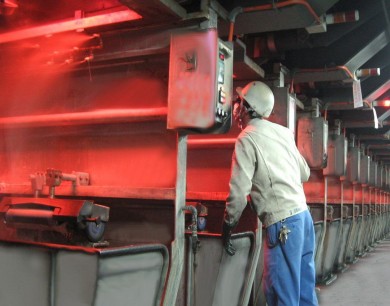
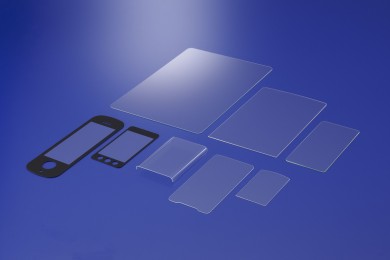
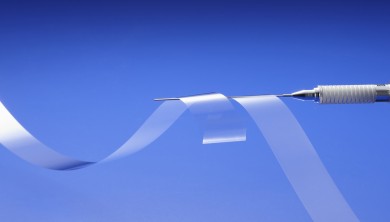
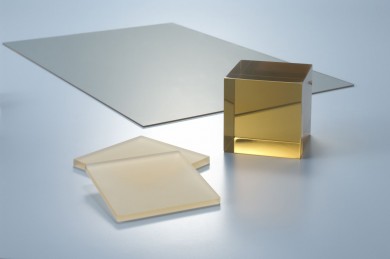
2015- For further growth
To seek further growth, we revised our corporate philosophy in 2015 and embarked on a three-year medium-term business plan in 2016. Under these circumstances, to expand our glass fiber business, we acquired a European business in 2016 and an American business in 2017 from PPG Industries. As a result, glass fiber has joined FPD glass as one of our main businesses supporting the company.
For further growth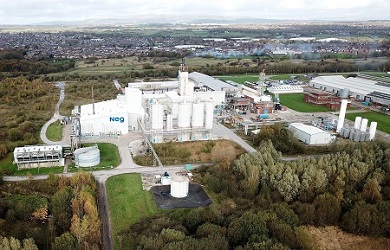
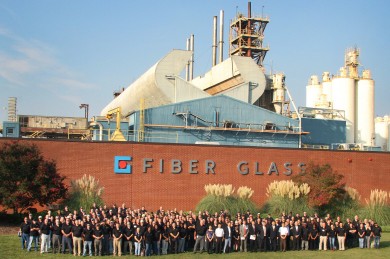
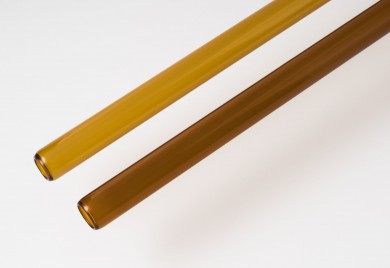
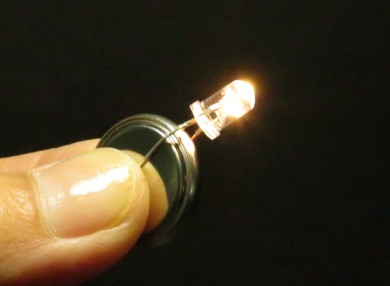
Chronological Table
*Please refer to the table to scroll to the left or right.
| Year | Product & Technology Development | Business Development | |
|---|---|---|---|
| Creating NEG’s Foundations | 1944 |
Established in October with investment from NEC Corporation and other. Loaned facilities to NEC following World War II and briefly suspended operations. |
|
| 1949 | Separated from NEC on December 1 (generally recognized as the day on which NEG was founded) as an independent company. | ||
| 1951 | Successfully began use of the Danner process to form glass tubing automatically; initiated mass production. | ||
| 1956 |
Started production (glass melting) using a large tank furnace. Started production of powder glass. |
||
| 1958 | Started production of glass for radiation shielding. | ||
| 1959 | Started production of glass blocks. | Established Fujisawa Plant. | |
| The Age of CRTs | 1960 | Introduced technology for manufacturing glass tubing from Owens-Illinois, Inc. (USA). | |
| 1962 | Developed super heat-resistant glass-ceramic “Neoceram”. | ||
| 1963 | Introduced technology for manufacturing CRT glass from Owens-Illinois, Inc. (USA). | ||
| 1964 | Started production of glass for diodes. | Established Shiga-Takatsuki Plant. | |
| 1965 | Started production of black-and-white CRT glass. | ||
| 1968 | Started production of color CRT glass. | ||
| 1971 | Established Notogawa Plant. | ||
| 1973 | Developed glass-ceramic building material “Neopariés”. | Company stock listed on the Tokyo Stock Exchange and Osaka Securities Exchange (Second Section). | |
| 1974 | Started production of thin sheet glass for LCDs and heat-resistant glass “Neorex”. | ||
| 1976 | Started production of ARG fiber and E-glass fiber. | ||
| 1977 | Initiated research project on glass solidification technologies for high-level radioactive liquid waste, based on a request from the Power Reactor and Nuclear Fuel Development Corporation in Japan. | ||
| 1980 | Started production of evacuation-type solar tube collectors. | ||
| 1981 | Started production of glass capillaries for optical connectors. | ||
| 1983 | Company stock transferred to the First Section of the Tokyo Stock Exchange and Osaka Securities Exchange. | ||
| 1985 | Started production of extra-large 37-inch CRT glass. | ||
| 1986 |
Started production of D-fiber. Developed low melting point powder glass for ultra LSl ceramic package. |
||
| 1987 |
Started production of alkali-free substrate glass for TFT-LCDs, cover glass for image sensors, ball lenses for optical communications, and glass for laser diodes. Started production of thin sheet glass by applying the continuous redrawing method. |
||
| 1988 | Launched sales of fire-resistant glass-ceramic for fire-rated glass “FireLite”. | Started CRT glass operations in the US via joint venture (which was to become our wholly-owned subsidiary in 1993). | |
| 1989 |
Established Precision Glass Center. Developed ball lens unit for optical communications. |
Made the US representative office a sales subsidiary. | |
| Age of Overseas Development | 1991 |
Established Wakasa-Kaminaka Plant. Started CRT glass operations in Malaysia. Codified Environmental Charter. |
|
| 1993 | Introduced oxy-fuel firing systems in melting furnaces. | ||
| 1995 | Developed PDP substrate glass and H-fiber. | Started CRT glass operations in EU (UK). | |
| 1996 | Started production of glass tubing for LCD backlights. | Started CRT glass operations in Indonesia and glass tubing operations in Malaysia. | |
| 1997 | Developed glass-ceramic ferrules for optical connectors. | Started CRT glass operations in China (Hebei Province) via joint venture. | |
| 1998 |
Established a recycling system for glass collected from used televisions. Started production of PDP substrate glass using the float process. |
Started production of glass fiber in Malaysia and CRT glass operations in Mexico. | |
| 1999 | Acquired ISO 14001 certification for all plants in Japan. | Started heat-resistant glass operations in Malaysia. | |
| The Age of FPDs | 2000 | Started production of LCD substrate glass by the overflow process. | Started CRT glass operations in China (Fujian Province). |
| 2001 | Started production of PDP glass substrates with ITO conductive films using in-line sputtering facilities. | ||
| 2002 | Launched sales of D-lens collimator components for optical communications. | ||
| 2003 |
Developed mass production technologies for producing ultra-compact prisms used in optical devices. Developed “Cersat” negative thermal expansion ceramics used for temperature compensation for optical communication devices. |
Started processing operations for LCD substrate glass in Korea (Gumi City). | |
| 2004 | Developed “LFX-9” lead-free radiation shielding glass for mammography facilities. |
Ended CRT glass production in the US and Mexico. Started processing operations for LCD substrate glass in Taiwan. |
|
| 2005 |
Started shipments of G7.5 size LCD substrate glass. Developed “Pro GR” gamma-ray shielding glass. Created technologies for producing ultra-fine glass fiber. Created technologies for direct roll forming for very large glass sheets. Succeeded in the development of ultra-thin glass sheet with a thickness of 100μm using the overflow process. |
Ended CRT glass production in EU. | |
| 2006 |
Developed lead-free glass tubing for diodes. Acquired ISO 17025 certification for reliable analysis of traces of hazardous impurities exclusively in glass. Started shipments of G8 & G8.5 size LCD substrate glass. Started CO2 emissions trading, which was the first to take place between domestic companies. |
Started processing operations for LCD substrate glass in Korea (Paju City) via joint venture. Ended CRT glass production in Japan. Cancelled CRT glass joint venture in China (Hebei Province). |
|
| 2007 |
Succeeded in the development of ultra-thin glass sheet with a thickness of 50μm using the overflow process. Developed glass for chemical strengthening. |
Concluded a comprehensive university-industry collaboration agreement with the University of Shiga Prefecture. Ended CRT glass production in Indonesia. Started processing operations for LCD substrate glass in China (Shanghai) via joint venture. |
|
| 2008 |
Developed OA-10G green glass substrate, which does not contain any environmentally hazardous substances. Successfully developed ultra thin glass with a thickness of 50 µm that can be rolled up on a cylinder. |
||
| 2009 |
Introduced LX Premium, a new type of radiation shielding glass that does not stain or discolor. Developed Glass panel with highly efficient UV-blocking coating. Launched sales of the world’s largest solar mirror with dielectric film. Jointly developed the world’s first thin-film lithium-ion secondary battery on an ultrathin glass, with a thickness of 30µm, with Iwate University. Developed extremely thin Glass-ribbon made using the redrawing process. |
Ended CRT glass production in China. | |
| Creating a new business pillar for growth | |||
| 2010 | Started shipment of glass substrates for solar cells. | ||
| 2011 |
Supplied ultra-thin lightweight mirrors for Space Solar Power Systems to the Japan Aerospace Exploration Agency (JAXA). Started mass production of glass for chemical strengthening. |
Started production of glass tubing for pharmaceutical use in Malaysia. Established P&P Technology Center Takatsuki at Shiga-Takatsuki plant. Established Nippon Electric Glass Europe GmbH in Germany. |
|
| 2012 | Started sales of “Invisible Glass”. | ||
| 2013 | Developed “ZERØ” with a coefficient of thermal expansion of zero. |
Established P&P Technology Center Otsu at Otsu plant. Started melting and forming operations for FPD-related glass in Korea (Paju City). |
|
| 2014 |
Launched the new brand “Dinorex” specialty glass for chemical strengthenings. Developed “VitroQuartz”, which has the same coefficient of thermal expansion as quartz. |
Started processing operations for FPD-related glass in China (Guangzhou). Established joint venture company, OLED Material Solutions Co., Ltd., in Notogawa Plant. Ended melting and forming operation for CRT glass. |
|
| For further growth | |||
| 2015 |
Developed world’s thinnest infrared absorbing filter. Developed glasses for supporting semiconductor wafers with various CTE. |
Closed Fujisawa plant. Started melting and forming operations for FPD-related glass in China (Xiamen). |
|
| 2016 |
Launched StellaShine™, a new brand of glass-ceramics for cooking appliance top plates. Developed glass frit for laser-sealing of ceramic package. |
Started processing operations for FPD-related glass in China (Nanjing). Acquired European glass fiber business of PPG Industries, Inc. Closed Wakasa-Kaminaka Plant. |
|
| 2017 |
Developed flat glass fiber for reinforcement of thermoplastic resin. Developed a new glass tubing material for pharmaceutical and medical use. Developed an all-solid-state Na-ion secondary battery using a glass-ceramic cathode. |
Acquired glass fiber operations in the U.S from PPG Industries. |
|
| 2018 |
Developed high-efficiency deep UV-transmitting glass. Developed an IR absorbing filter with the world’s highest visible light transmittance. Developed an optical coating material to realize high contrast for display cover glass. Developed the world’s smallest optical isolator for high power fiber lasers using magneto-optical glass. |
Purchased carbon offset credits(J-Credit)issued by a forestry association in Shiga Prefecture, to contribute to local environmental conservation. |
|
| 2019 |
Developed infrared lenses using world’s highest performance infrared transmitting glass. Achievement of world’s highest performance as substrate glass for smart glass. Developed 3D printer paste that enables high-precision ceramic modeling. Established mass production technology for micro-ball lenses for 5G with uniform anti-reflection coating. Developed lead-free low-melting-point glass frit that enables sealing at 380℃. |
Established new medium-term business plan EGP-2021. Certified with top rating(three stars)as a company embracing Shiga Prefecture Biodiversity Initiative. Concluded a naming rights partnership contract with Shiga Prefecture for supporting the Lake Biwa Floating School Program. Established a joint-venture on LTCC business. |
|
| 2020 |
Development of Glass Beads that Realize Translucency of 3D Printed Models. Achieves practical-level performance of all solid state sodium (Na)-ion secondary battery. (Paper appears in Scientific Reports – Nature) Successful Development of the World’s Thinnest Glass as a Cover Glass for Foldable Displays. Development of 5G-Suitable Materials for LTCC with the Industry’s Lowest Loss Tangent. |
||
| 2021 |
Developed and commercialized lid with sealing material for packages of optical devices. Developed the world’s first colorless transparent zero-expansion glass-ceramics. Developed and commercialized cap lids with the world’s highest light extraction efficiency. Developed low-loss LTCC materials for 5G communication. Developed the world’s first all-oxide all-solid-state sodium(Na) ion secondary battery. |
Concludes “Lake Biwa Carbon Credit” partner agreement with Shiga prefecture afforestation public corporation. Donated books to children’s cafeterias in Shiga prefecture. Suppot for the Task force on Climate-related Financial Disclosures(TCFD). |
|
| 2022 |
Succeeded in melting glass with combustion technology using a hydrogen-oxygen burner. Developed new products expanding 5G wireless communication area. Business of jewery glass infiora™ starts in the wedding industry. |
Established new medium-term business plan EGP-2026. Agreed to establish an endowed chair in basic science of glass with Kyoto University. |
|
| 2023 |
Development of the World’s First All-Glass-Ceramic, All-Solid-State Sodium (Na) Ion Secondary Battery Using a Glass-Ceramic Solid Electrolyte. Lens Antenna Utilized in Self-driving Bus Convoy Demonstration Experiment. |
Start Operation of a Mega Solar System at Shiga-Takatsuki Plant. Signed its First VPPA for Solar Power. |
|


